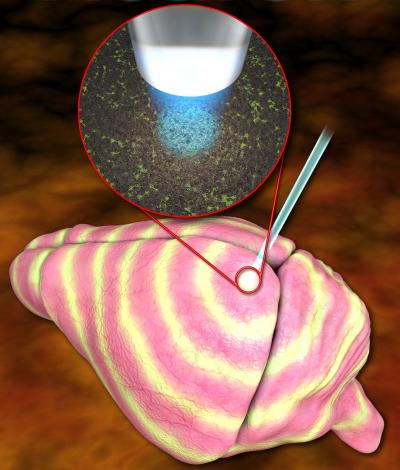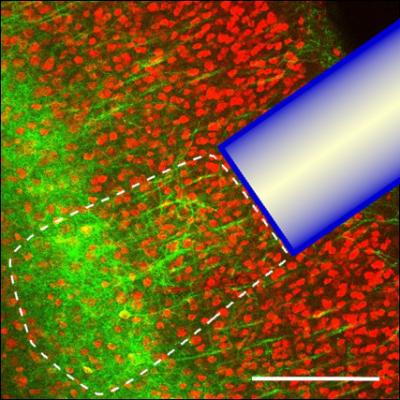The brain’s “slow waves” are rhythmic signal pulses that sweep through the brain during deep sleep, and are assumed to play a role in processes such as consolidation of memory.
A new study – based on optical probing of intact brains of live mice under anesthesia – is helping scientists understand the underlying circuit of slow waves. For example, the researchers learned that slow waves start in the cerebral cortex, the part of the brain responsible for cognitive functions. They also found that such a wave can be set in motion by a tiny cluster of neurons.
Researcher Prof. Arthur Konnerth, of the Technische Universitaet Muenchen, said:
The brain is a rhythm machine, producing all kinds of rhythms all the time. These are clocks that help to keep many parts of the brain on the same page. One such timekeeper produces the so-called slow waves of deep sleep, which are thought to be involved in transmuting fragments of a day’s experience and learning into lasting memory. They can be observed in very early stages of development, and they may be disrupted in diseases such as Alzheimer’s.

Konnerth’s Munich-based team – in collaboration with researchers at Stanford and the University of Mainz – used light to both stimulate slow waves and observe them in unprecedented detail. One key result confirmed that the slow waves originate only in the cortex, ruling out other long-standing hypotheses.
Professor Konnerth said:
The second major finding was that out of the billions of cells in the brain, it takes not more than a local cluster of fifty to one hundred neurons in a deep layer of the cortex, called layer 5, to make a wave that extends over the entire brain.
The research team used a technique call ‘optogenetics,’ in which researchers insert light-sensitive channels into specific kinds of neurons, to make them responsive to light stimulation. This allowed for selective and spatially defined stimulation of small numbers of cortical and thalamic neurons.

Access to the brain via optical fibers allowed for both microscopic recording and direct stimulation of neurons. Flashes of light near the mouse’s eyes were also used to stimulate neurons in the visual cortex. The researchers recorded the flux of calcium ions – that’s a chemical signal that can serve as a more spatially precise readout of the electric activity, as thus were able to make the the slow waves visible. They also were able to watch individual wave fronts spread – like ripples from a rock thrown into a quiet lake – first through the cortex and then through other brain structures.
The researchers said that a surprisingly simple communication protocol can be seen in the slow wave rhythm. During each one-second cycle a single neuron cluster sends its signal and all others are silenced, as if they are taking turns bathing the brain in fragments of experience or learning, building blocks of memory.
Bottom line: A 2013 study by an international team of scientists – based on optical probing of intact brains of live mice under anesthesia – is helping scientists understanding the underlying circuit of slow waves.











